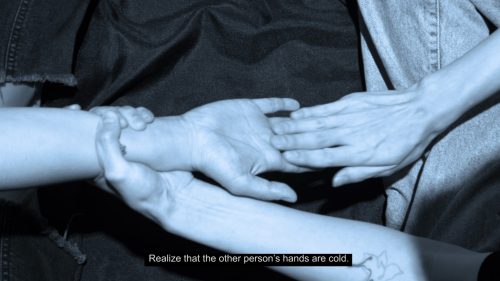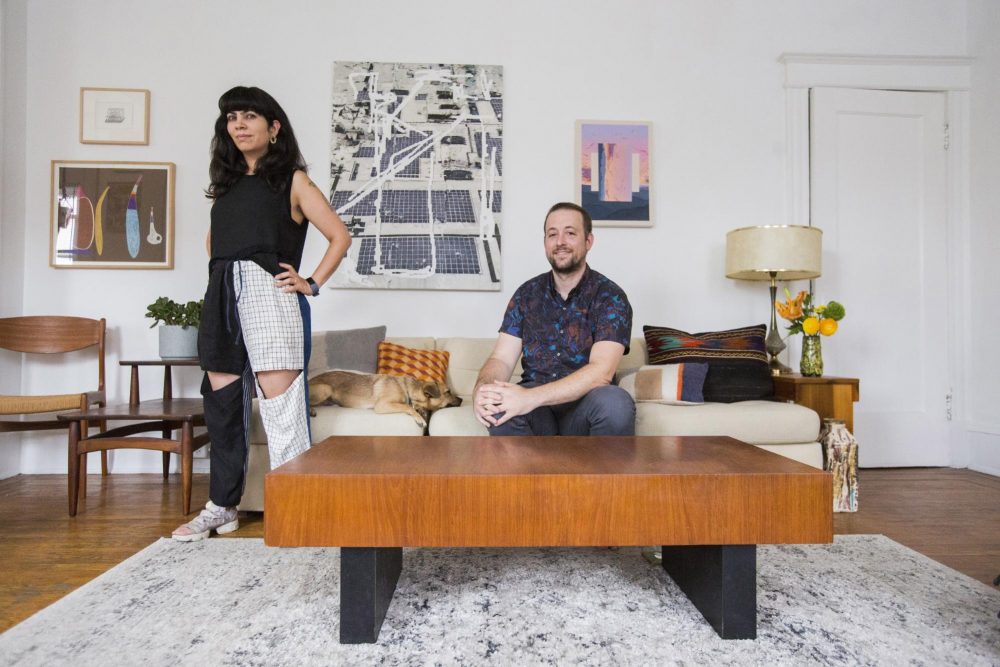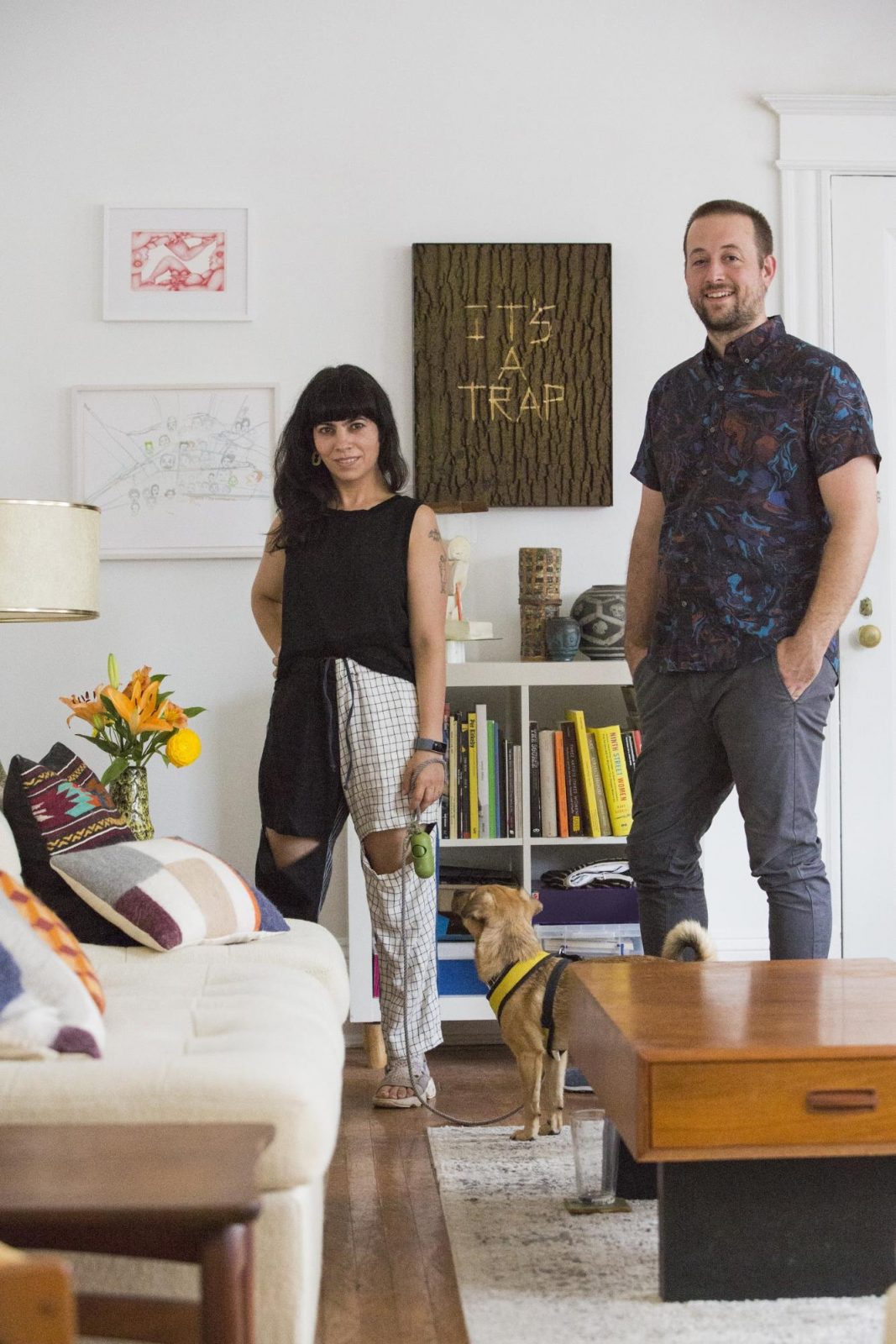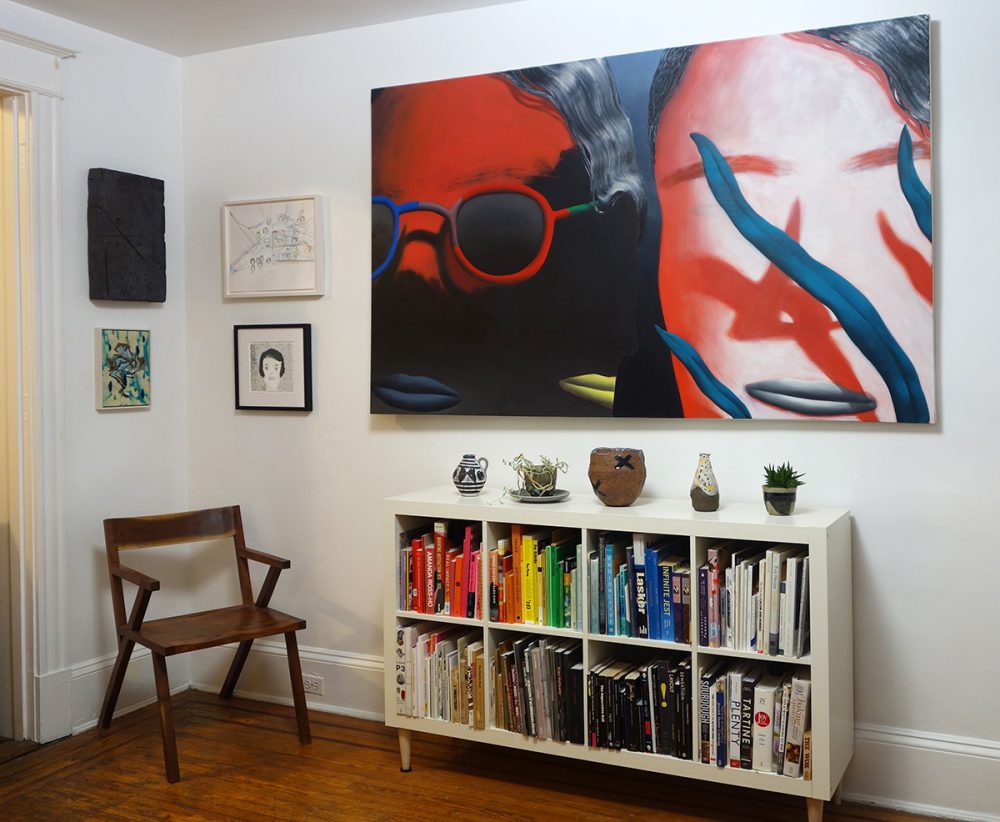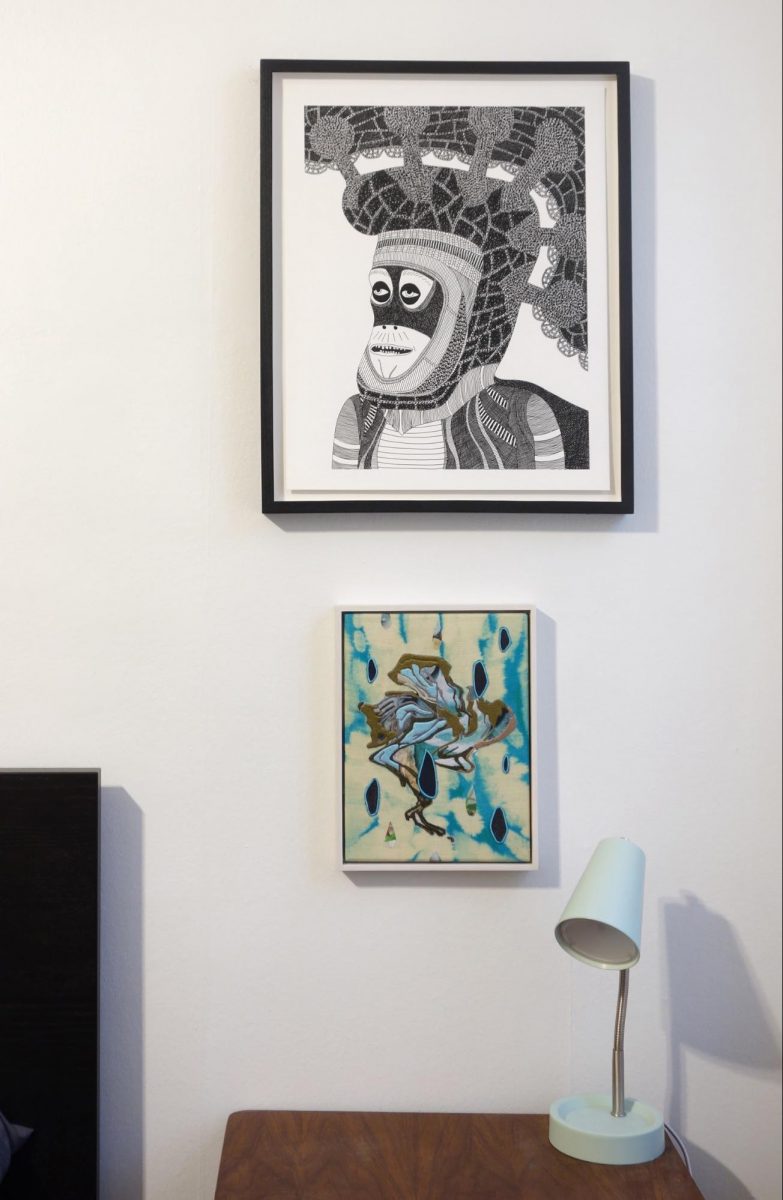“Collecting is a way to directly support artists we believe in strongly enough to show in the first place,” explain Alex Ebstein and Seth Adelsberger, partners in life, artists, and owners of Resort gallery. “We collect if and when we can, and we’ve learned to trust our instincts. We continue to research and buy art directly from compelling emerging artists and try to support artist-run spaces when we can.” The two explain that their acquisitions from galleries have all been from artist-run, rather than commercial, because they know from personal experience that these spaces are the first to invest time, effort, and money on emerging artists before they’re deemed as marketable by bigger, more established entities.
Developing a collection involves various dynamics, including relationship-building with artists, curators, other collectors and gallerists, visiting galleries and museums, and perusing social media for the next pieces that they plan to add. Together, Ebstein and Adelsberger have built a collection of more than 100 original works as well as prints, artist books, and artist-made goods like dishes, clothing, and jewelry from more than a decade of running galleries, curating exhibitions, and exhibiting as artists themselves. What doesn’t fit in their apartment waits in storage as they rotate pieces in and out periodically, rendering their home as both a gallery and a domestic space, enriched by their love for art and artists.
The works that Ebstein and Adelsberger live with in their Charles Village apartment are inspiring, especially for those who envision an ideal future home-gallery hybrid, filled with the art of peers and also from around the globe. The pair’s taste and intentionality in building their collection reflect the connections they have created with artists from across the country over the past twelve years. This is inspiring for both emerging and established collectors because they demonstrate how curating a smart and fabulous collection is attainable, while also consistently producing exhibitions and maintaining expanding studio practices, all while earning a living for many years with gig work and on a shoestring budget.
Both Ebstein and Adelsberger boast significant success as individual artists, with Adelsberger’s work in the BMA’s collection and Ebstein preparing for a NY show at Victori+Mo this fall. Together they founded, run, and curate the exhibitions at Resort, a contemporary art gallery located downtown that shows a combination of Baltimore-based emerging and established artists, as well as national names. This model, which builds connections and opportunities for the artists they show was established when the two founded and ran the now-defunct Nudashank gallery, located in the H&H Building from 2009-2013, as well as Ebstein’s former Phoebe project space on Franklin Street in 2016, which launched the of careers of many of their peers and colleagues.

During the shutdown for COVID-19, they have adapted their workspaces (Ebstein is the director of exhibitions and curator of Goucher College’s art galleries and Adelsberger the owner of New Standard Frames) and made adjustments to work at home. Along with a dining room Zoom setup, they have used our apartment for filming a framing demo, framing projects, and photographing and inventorying works for Resort’s online art sales. The two are happily quarantining with their one-year-old rescue dog, Murray, who they adopted in mid-March, although they both expressed that not being able to see people, studios, galleries, and museums has been challenging, both personally and professionally.
“I spent so much of my time working, researching, and socializing in these art spaces and I miss it,” Ebstein says. “While it is certainly possible to keep working and socialize over Zoom, I miss curating shows, handling artwork, and having conversations about the work. I miss going to artists’ studios and seeing the beginning of an idea and talking about how they expect it to change or resolve. I feed off the energy of working with creative colleagues, and I feel a little lost without it.”
When deciding what to collect, both acknowledge that there is no rigid, calculated formula or metric for them, although there are works by a number of internationally respected and highly collectible artists in their home. The first piece that Ebstein remembers purchasing was a $20 drawing by Jordan Bernier from Wise Guise, their first exhibition at Nudashank. Adelsberger began his collection with screenprints and unframed pieces by artists he admired at smaller art fairs in Miami, and says that those pieces typically ranged from $150 to $250. They’ve acquired some of the works they own through trades of their own art, while others were gifts from artists they’ve shown. “We’ve purchased work from shows we’ve curated and often, to our astonishment, our purchases have been the only ‘sales’ that have come out of the show,” they said, reflecting a lack of financial support for most contemporary artists.
After years of living with other artists in communal spaces like the H&H Building and more recently with a group of friends in Mt. Washington, the two moved into their current home a few months ago. “We live with a lot of art, much of it is by Baltimore-based or formerly Baltimore-based artists,” they said. “It has been a long time since we have lived outside of a group situation and we are excited to finally have the wall space to display most of the work we have been collecting over the past 10+ years.”
The work the two have selected for their new living space is textural and smart, colorful and abstract, with highlights from some of the most interesting and ambitious artists exhibiting today—like Gina Beavers, Ted Gahl, Karen Yasinsky, Jordan Kasey, Laylah Ali, and others—whose work promises to increase in influence and value. They graciously took me on a virtual tour of their space and we discussed some of their favorite pieces.


